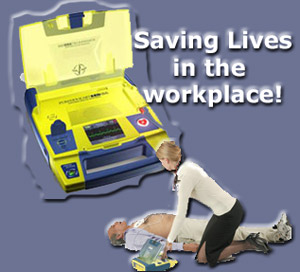 |
 |
|
As previoiusly reported by this website, Automated External Defibrillators are common place in major government buildings, shopping centres, and tourist attractions such as museums and public buildings. They are responsible for many life-saving situations where had it not been for the defribillator and a member of the public using it; the victim of a life-threatening cardiac event would not have survived in time to be taken to hospital for treatment. Now BT has announced its intention to install a number of Automated External Defibrillators in 41 key BT sites, reports the CWU. AED’s are already in place in a couple of BT sites in Leavesden and Adastral Park but will now be extended to the 41 sites as detailed in a letter to branches (LTB152/14) issued earlier this week.
The CWU is very supportive of this life-saving initiative and investment. For it to work the Company needs volunteers to be trained in the use of AED’s. Many of our members already volunteer as First Aiders and the Union would encourage those and others to step forward and volunteer for training that could well save a colleague’s life. The next step of course is to have trhem available in engineers vans according to those supporting the idea that a customer's life or member of the public's life could be saved if a cardiac event occurred within the vacinity of an engineer's vehicle to a member of the public or in the home of a customer. A joint statement by The British Heart Foundation and The Resuscitation Council issued in 2010 said: In February last year, an e-petition called for the government to preovide defribilliators in all public buildings. You can still read the news item concerned: New E-Petition Demands Government To Provide Defibrillators In All Public Buildings Source: Unionsafety |
 AED’s are used to shock the heart when life-threatening rhythm problems occur and can increase the chances of survival when someone suffers a heart attack.
AED’s are used to shock the heart when life-threatening rhythm problems occur and can increase the chances of survival when someone suffers a heart attack.